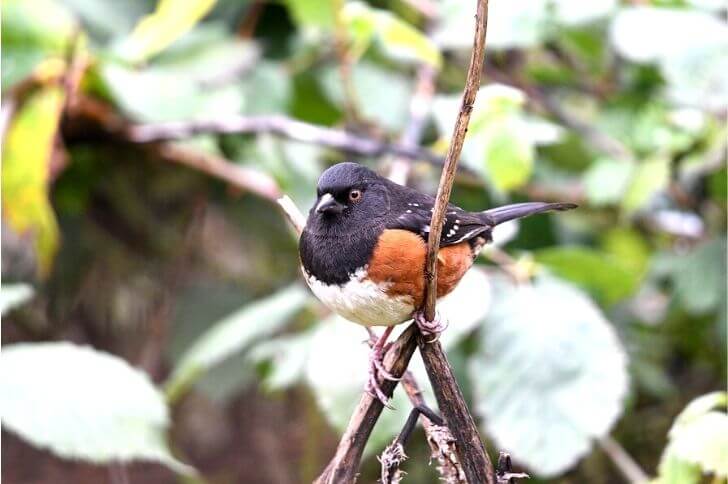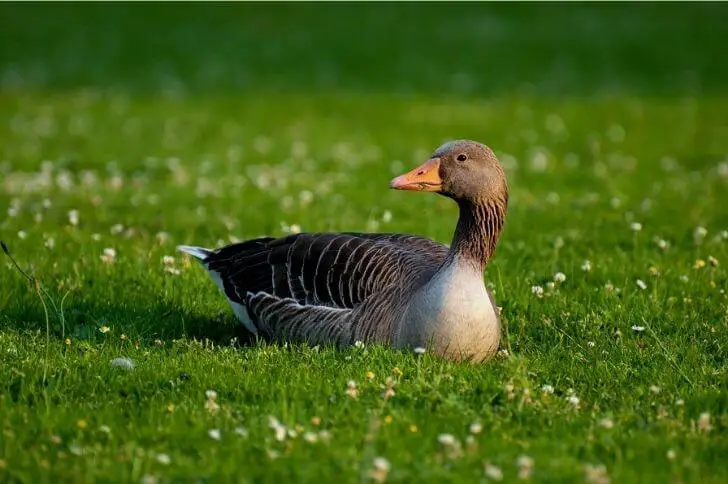Bald eagles are a species of eagle that are known for their gorgeous white heads and tails. Their speeds are also something to marvel at. They are native to North America and can be found in parts of Canada and the United States.
In the US they are found in many states including Texas and in the article below you’ll learn where to find them in this large state. So if you are looking to tick off one more bird from your list of must-see birds, read on.
Do bald eagles live in Texas?
Bald eagles are not just found in cold weather climates. This national bird can be found in every state, including Texas. While it is more common to see bald eagles near water, they have been known to live in all sorts of habitats. Hunting and nesting habits make October through July the best time to spot bald eagles in Texas.
Texas bald eagles nest locations
Bald eagles are a majestic sight and it’s no wonder that people want to know where to find their nests. Texas is home to many bald eagles and their nests can be found in some surprising places.
One of the most popular places to see these large birds of prey in Texas is at Lake Livingston, mostly in fall and winter. The lake is a haven for the birds and there is often a large population of breeding birds nesting there. Another great place to see bald eagles is at Lake Corpus Christi. The lake has a large population of fish, which attracts the eagles.
Bald eagles can also be found nesting in some urban areas, such as Houston and Austin. You can see them in Brazos Bend State Park and Sheldon Lake State Park.
Other bodies of water that are home to these avian species include Lake Texoma, Lake Buchanan, and San Jacinto Battleground. These birds are adaptable and can make their homes in a variety of habitats. So, keep your eyes peeled for these large birds the next time you’re out exploring Texas!
Here’s how to identify these birds:
Immature birds
As the name suggests, young bald eagles are not yet fully developed. They lack the signature white head and tail feathers of adults, and their plumage is generally a mottled brown.
Juvenile bald eagles have dark brown plumage with white mottling on their breasts and bellies. As they approach adulthood, their plumage becomes lighter and more evenly colored, with less white mottling. Finally, adult bald eagles have the iconic white head and tail feathers.
So, if you see a juvenile bird with brown plumage and white spots, it’s likely an immature bald eagle.
Adult Birds
They are easily recognizable by their white head and tail, which stand out in contrast to their dark brown body. While adult bald eagles typically have this coloration, there are some instances where they may exhibit different hues.
One reason for this is due to the eagle’s diet. If they consume a lot of fish that contain carotenoids, it can affect the pigmentation of their feathers and make them appear more yellow or gold in color. Additionally, if an eagle doesn’t have access to food sources that contain these nutrients, their feathers may appear more pale.
How far do bald eagles fly from their nest?
These raptors typically fly between 3 and 10 miles from their nests, although they have been known to travel much farther. The birds typically mate for life and will return to the same nest year after year, adding to it as needed.
While most bald eagles stay close to their nests, there are some that have been known to travel much farther. In one case, a bald eagle flew over 2,000 miles from its nest in Alaska to central Mexico. Another eagle flew from Canada to the Caribbean island of St. Croix.
There are several factors that can influence how far a bald eagle will fly from its nest. One is the availability of food. If there is a shortage of food in the area where the nest is located, the eagles may need to travel farther in search of sustenance. Another factor is the presence of predators or other threats.
Where are bald eagles in North Texas?
One of the best places to see a bald eagle in North Texas is at Lake Tawakoni State Park. This park is home to a large number of bald eagles, and they can often be seen perching in the trees or flying over the lake.
Another good spot for eagle watching is Cedar Hill State Park. This park also has a large number of bald eagles, and visitors often report seeing them nesting in the trees.
Related Read: Learn about Ohio Bald Eagles
How common are bald eagles?
Breeding populations of the bald eagles have been on the rise. In fact, there are about 417 bald eagles in Texas. Most of these bald eagles live in the Panhandle region of Texas. The reason for this is because the Panhandle has more lakes and rivers than any other region of the state.
How many bald eagles are in Texas?
There are an estimated 420 bald eagles in Texas. This number has been increasing in recent years, thanks to conservation efforts.
What time of day is best to see eagles?
Eagles are most active in the mornings and evenings, so those are the best times to see them. They tend to roost in trees during the day, so you’re more likely to see them flying or perching early in the day or just before sunset.
What is the largest raptor in Texas?
The largest raptor in Texas is the American bald eagle. With a wingspan of up to eight feet and weighing up to 14 pounds, these majestic birds are truly impressive. Adult bodies range from 27-37.8 inches.
Do eagles stay in Texas all year round?
Although eagles are more typically associated with the northern United States, these majestic birds can also be found in Texas. In fact, according to the Texas Parks and Wildlife Department, there are an estimated 400 eagles that live in the Lone Star State.
So, do eagles stay in Texas all year round? The answer is both yes and no. While some eagles do remain in Texas throughout the year, others migrate south for the winter months. Migration patterns vary depending on the individual bird, but most eagles that migrate from Texas head to Mexico or Central America.
Are there bald eagles in Fort Worth?
Yes, there are bald eagles in Fort Worth. The city is home to a large number of these majestic birds, which can often be seen soaring through the skies or perching atop tall trees. While they may not be as common as other bird species in the area, they are still a sight to behold.
Are there bald eagles in Corpus Christi?
Yes, a few of these birds of prey have made Corpus Christi home. These birds of Texas can often be seen flying near the shoreline or perched in trees along the bay.
These birds typically nest near rivers or lakes, so they are often seen near bodies of water.
Can I keep an eagle feather I found?
It’s not uncommon to find an eagle feather while hiking or camping. If you’re lucky enough to find one, you may be wondering if you can keep it.
The answer is a bit complicated. Under the Protection Act, it is illegal to possess any part of an eagle. However, there are some exceptions to this law. For example, if you are a member of a federally recognized tribe, you may be able to obtain a permit to possess eagle parts for religious or cultural purposes.
If you’re not sure whether or not you can keep the eagle feather you found, your best bet is to contact your local wildlife agency for more information.
What does it mean when this raptor lands in your yard?
When a bald eagle lands in your yard, it could mean a few different things. The first possibility is that the eagle is simply looking for a place to rest or take shelter.
Another possibility is that the eagle is looking for food. Eagles are known to eat small mammals, reptiles, and even fish, so if you have any of these in your yard, the eagle may be after them.
Finally, it’s possible that the eagle sees you as a threat and is trying to intimidate you. Regardless of the reason, it’s important to remember that bald eagles are federally protected birds, so it’s against the law to harm them in any way.
Does east texas have bald eagles?
They typically inhabit areas near water where they can find fish, their primary food source. In east Texas, the eagles can be found near lakes and rivers such as Caddo Lake, Toledo Bend Reservoir, Sam Rayburn Reservoir, and Sabine River. The dense forest cover in this region also provides ample roosting and nesting sites for the birds.
Sources:
https://en.wikipedia.org/wiki/Bald_eagle
Hi, my name is Steve. My friend and I started the spanishbirdguides.com to share our passion with other like-minded people. So, if bird watching is your thing, you’ll love this blog. I’ll share what I’ve learnt about both local birds and those found in other parts of the world. Also, I’d love to hear your experiences.



